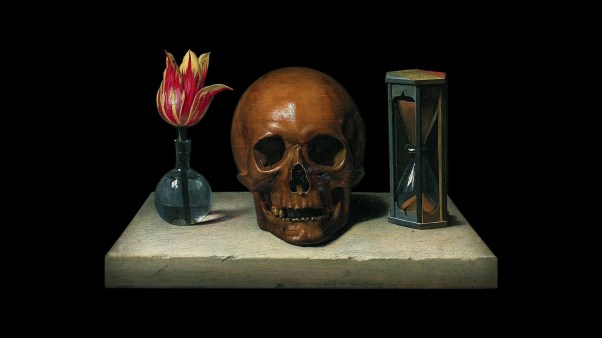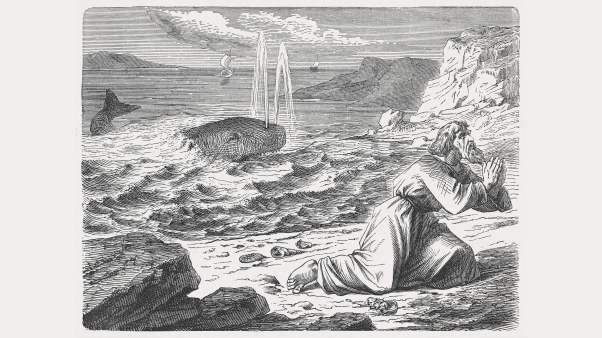Everyone who reads the Bible owes a debt of gratitude to Constantin Tischendorf, for it was his persistence and industry that unearthed many of the manuscripts and fragments that are the basis of our twentieth-century Scriptures. And 1974 marks the one-hundredth anniversary of his death.
Born January 18, 1815, in Lengenfeld, Saxony, Lobegott Friedrich Constantin von Tischendorf laid the foundations for his study of classical languages in the gymnasium (grammar school) of Plauen. At nineteen he entered the University of Leipzig. Those were the days when German theologians, thinking to render a service to historical truth, were casting doubt upon the authenticity of the New Testament. Tischendorf saw that the proper defense was the establishment of the text upon the evidence of biblical documents carefully studied and edited.
At twenty-five Tischendorf acquired permission to hold lectures at the university. The great purpose of his life was crystal clear to him: nothing was so important as the careful study of the oldest manuscripts of the New Testament to establish the genuineness of the text. Only two years later, in 1841, Tischendorf published the first of his eight critical editions of the Greek Testament. The famous eighth edition was issued in 1869 and 1872, and it is still the starting point for textual criticism of the New Testament. The total number of his books and articles exceeds a hundred and fifty.
The young editor was quite aware of the hot water he was getting into with his Greek Testament. From Leipzig in October, 1840, he wrote to his fiancee, Angelika Zehme:
At last I have reached the eve of the completion of my New Testament. This gigantic undertaking has weighed heavily on me, and later it will seem unbelievable, even to me, that I could write a book in less than a year which will bring both curses and blessings, disgrace and glory. I lay its future in God’s hands. Though jealousy and narrow-mindedness cast suspicion upon me, I know I have struggled in an earnest and holy endeavor, though all my strength be weakness.… If others suspect me of following any other than a heaven-sent goal, you must not believe it [quoted by Ludwig Schneller in Search on Sinai, Epworth, 1939, p. 16].
A challenge awaited the young scholar in Paris at the Bibliothèque Nationale. Codex C, a fifth-century manuscript of the Greek Bible, had been nearly erased by a twelfth-century scribe who then used the parchment to copy a Greek translation of sermons by St. Ephraem, a fourth-century church Father. Both Griesbach and Wetstein had given up on the task of recovering the biblical text. Ludwig Schneller, Tischendorf’s son-in-law, tells how Tischendorf sat day after day in the library examining the pale Greek letters “and thus progressed, letter by letter, line by line, page by page, through two long years.” Success resulted, and with it the young man established a name for himself in biblical scholarship.
Other centers called where biblical materials could be found. In December, 1843, he wrote his fiancee, “From here in Verona I intend to go to Milan, in January to Turin, in March to Leghorn, from there I take ship to Alexandria, to the holy mount of Athos, and back to Leipzig via Greece and Trieste” (Schneller, loc. cit.). And in almost every place treasures of manuscripts and biblical texts rewarded his searching.
In 1844 Tischendorf made the first of three journeys to Sinai, and here he made the greatest find of his life. It was a twelve-day journey by camel caravan from Cairo to St. Catherine’s Monastery in the mountains of Sinai. St. Catherine’s was built in 530 A.D. by Emperor Justinian, and while many other libraries suffered destruction and pillage, the treasures here remained largely intact—a magnet attracting scholars even to our day. The Library of Congress in 1950, with other supporting institutions, mounted an expedition to St. Catherine’s that microfilmed its most important documents.
But some of the ancient materials had already been destroyed. In 1844 Tischendorf found 129 large parchment leaves in a basket ready for the fire. He realized that they were from the Septuagint, the Greek Old Testament, and were very ancient. He was granted 43 pages, but the abbot refused to part with the rest. In his hands was a portion of what was to be known as Codex Sinaiticus, containing parts of First Chronicles, Second Esdras, Esther, Tobit, Jeremiah, and Lamentations.
Early Pentecost Sunday morning, before returning to Cairo, Tischendorf climbed to the pinnacle of the mountain. There he wrote a note to Angelika Zehme:
I am praying on the stone whereon Moses prayed. The spirit of God surrounded him. Oh, that that spirit would permeate me with its eternal power! Today is Whit Sunday. How happy I am! The hot light of the sun is breaking through the mist which envelops the mountains. I am hoping that this may be a symbol of yours and my future, my Angelika! That is what I will pray for from the Father of all prayer; pray you for me. I greet you thus, my beloved heart, from the height of Sinai. [Schneller, op. cit., p. 52].
Tischendorf published his find, naming his codex for his patron, Frederick Augustus, king of Saxony. Other journeys intervened, and not until February, 1853, did he make his second trip to Sinai, to copy what he could not buy. Elsewhere, in Cairo, Alexandria, Jerusalem, Laodicea, Smyrna, Constantinople, Athos, he found some sixteen parchments, several Greek uncials, and Coptic, Syrian, and Karaitic documents.
Six years later, now under the patronage of Alexander II of Russia, Tischendorf was at St. Catherine’s searching for the remainder of his fourth-century manuscript. Only discouragement met him. One evening he took a walk with the steward of the monastery. They talked about Tischendorf’s recent publication of the Septuagint. The steward had one, he said, in his cell. A manuscript, covered with red cloth, was unwrapped before Tischendorf’s eyes. Bursting with controlled excitement he looked upon the missing 86 pages of his manuscript and 112 more pages. The entire New Testament was intact and there were two other writings, the Epistle of Barnabas and most of the Shepherd of Hermas. Tischendorf studied all night but was not allowed to take the manuscript to Cairo. When he got to Cairo, however, he engaged in a series of diplomatic maneuvers with abbots there, and a fast Bedouin messenger sent to Sinai returned with the treasured manuscript. With the help of two Germans, the 110,000 lines of the text were copied in two months. Royal prestige and a bit of politics finally put the entire document in Tischendorf’s hands as a gift to the Russian tsar, later (1933) to be purchased for the British Museum where it now is—the only uncial manuscript containing the entire New Testament.
For the modern student Tischendorf’s editio octava critica maior is the center of interest. To turn at random to a page of the famous eight edition of Tischendorf’s New Testament: one line of the Greek of Luke 6:1 is given, and there follow eighty-nine lines of textual notes. These consist of symbols of the Greek and Latin manuscripts for the readings they support, along with the testimonies of versions—Gothic, Ethiopic, Syrian, Armenian; then quotations from Greek and Latin Church Fathers, and some readings by other editors of the Greek text. The meticulous detail is immense, the grasp of materials, phenomenal.
Even so, there were those who wished for more. Charles John Ellicott, in the preface to his Commentary on the Epistle of St. Paul to the Thessalonians, says:
And yet we see on all sides critical editions of the sacred volume multiplying, and, in at least one instance (I regret to say that I allude to the otherwise useful edition of Dr. Tischendorf), can abundantly verify the fact that Latin translations, not always trustworthy or exact, have been the main authorities from which readings have been derived. Is it too much to demand of a critical editor, of one who is by the very nature of his work free from the many distractions of thought that are the lot of the commentator,—is it too much to demand that he should consider it a part of his duties himself to acquire such a knowledge of these languages as to be able to tell us plainly and unmistakeably what are and what are not the true readings of these early and invaluable witnesses [Zondervan, 1957, p. ix].
Unfortunately the desired certainty is not always the product of such study. Even the student of the text is required to walk by faith.
In Manuscript Studies Kenneth W. Clark writes:
We need a “new Tischendorf.” At the moment we are not referring to his critical text but to his apparatus criticus. It is safe to say that since 1872 no work has been consulted oftener by the textual critic than his editio maior. In a double sense it has been our “bible” [eds. M. M. Parvis and A. P. Wikgren, University of Chicago, p. 16].
Bruce M. Metzger speaks of the eighth edition as “a monumental thesaurus of variant readings.” Sidney Jellicoe writes:
As Hort and others were to err in according too much weight to B (Codex Vaticanus), so Tischendorf erred, understandably, in allowing too great preponderance to Aleph (Codex Sinaiticus). Nevertheless this editio octava critica major, with Gregory’s elaborate Prolegomena, still constitutes the fundamentum ac janua for the textual criticism of the New Testament [The Septuagint and Modern Study, Clarendon, 1968, p. 4].
Jellicoe notes that the eighth edition differed from the seventh in no fewer than 3,572 places. Kurt Aland and his institute in Munster have continued the search for basic New Testament materials, now listing well over five thousand hand-written Greek papyri, parchments, fragments, and lectionaries. Recently (1969–70) Gerhard Krodel, quite in the spirit of Tischendorf, searched through various libraries in Turkey, Cyprus, and Greece and added forty-seven manuscripts not previously inventoried.
It is only natural to look back at the work of Tischendorf from the modern perspective and see weaknesses. Writes Aland:
One hundred years have passed since an edition last appeared, which summed up what was known about the tradition of the NT text. Without doubt Tischendorf’s accomplishment was immense, but how many manuscripts did he use for his critical apparatus? Of the more than 80 papyri known today, he used only parts of one single manuscript (i.e., p11, of which, at that time, only about one-third was accessible). Of the now-known uncials, he used at most 80 (possibly 64), i.e., a maximum of 30%. It cannot be ascertained with any certainty how many minuscules he used. It was at most 150, for Westcott and Hort explained (vol. 2, p. 77), that in their time, this number of minuscules were known in their entire content. This is about 6% of the 2764 minuscules known today. Tischendorf consulted a few lectionaries, but only a few.… Some versions used by him were unreliable, and the critical editions of the church fathers appeared after his time.… In spite of this, Tischendorf’s edition is and remains the indisputable basis for the person involved in textual criticism [“The Greek New Testament: Its Present and Future Editions, Journal of Biblical Literature 87, Pt. 2, p. 182].
While it is the apparatus and not the text of Tischendorf’s eighth that scholars applaud, yet in the coming third edition of the United Bible Societies’ Greek New Testament, reports Bruce Metzger in A Textual Commentary on the Greek New Testament, the text on occasion will return to readings favored by Tischendorf, as in Romans 5:1, from “we have peace with God” (indicative), to “let us go on having peace with God” (subjunctive). On the other hand, says Metzger, probably Tischendorf was in error by accepting the first reading of his Sinaiticus at Luke 24:51 rather than the corrector’s note, and so omitted the phrase “and was carried up into heaven,” which is now discovered in the earlier papyrus P75.
If, as suggested, a “new Tischendorf” is needed, so too are a “new Frederick Augustus” and a “new Alexander II,” since basic textual research is poorly underwritten by the very ones who profit greatly by it. Aland has suggested that all New Testament translation is premature until the wealth of available manuscripts is throughly studied and evaluated.
Any person’s work that has supported one hundred years of search by many biblical scholars and still remains valuable is worthy of an anniversary commemoration by the whole church. This worker passed to his reward December 7, 1874. Let us stand with Pastor Ahlfeld of St. Nikolei church and hear him read the funeral text of the occasion, with it’s allusion to Tischendorf’s discovery on Sinai:
And the LORD said, Behold, there is a place by me, and thou shalt stand upon a rock: and it shall come to pass, while my glory passeth by, that I will put thee in a cleft of the rock, and will cover thee with my hand while I pass by: and I will take away mine hand, and thou shalt see my back parts: but my face shall not be seen [Exod. 33:21–23].
The glory that Tischendorf saw bound him to the biblical manuscripts. There is still glory there.
GRANDMOTHER: DYING
Aged in one stroke
the old woman lies
in silence,
her lips caved in
in unaccustomed severity
around her toothless gums.
Yet she is not without
dignity. The lines
of her life betray
no hidden gall,
no secret sin for years
eating at her conscience.
Others shout and scream,
abuse their nurses,
and their long dead husbands.
The grace she learned
in childhood
still wears new.
And when she speaks to us
and says, “I’ve been
talking with an angel,”
we know that if our eyes
were opened we would see
a company of angels
standing at her wounded side.
JOHN LEAX










